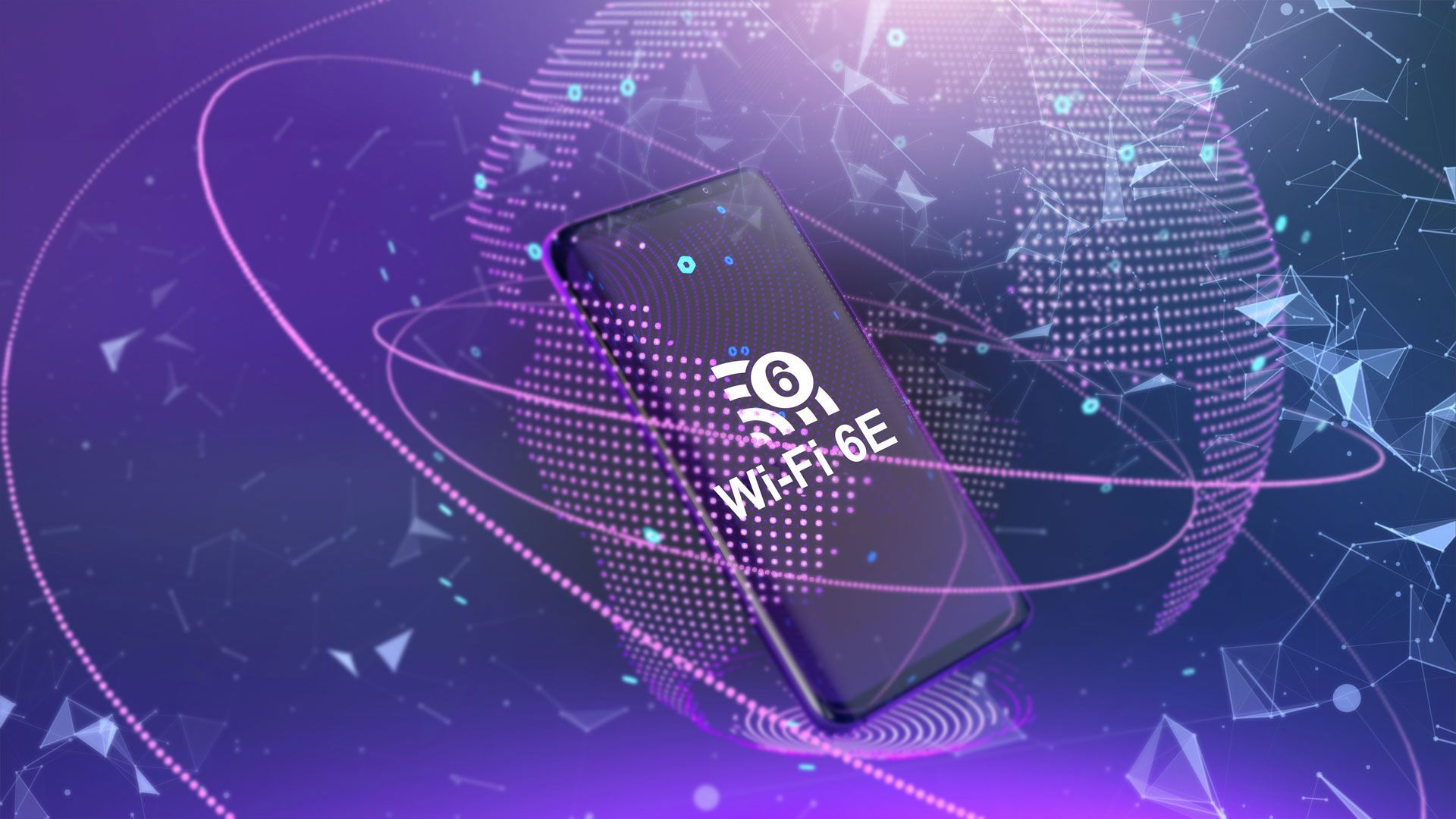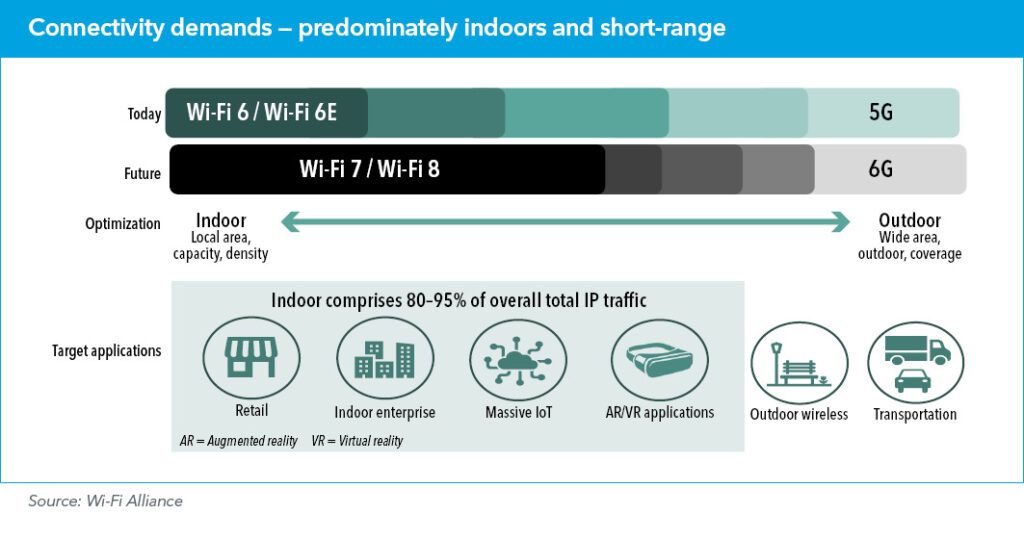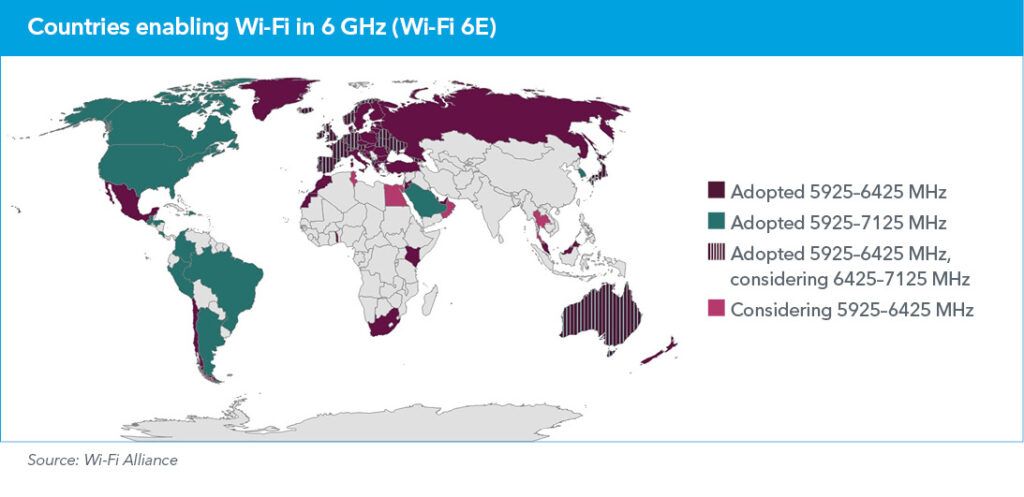
Connecting to the future with 6 GHz Wi‑Fi


Alex Roytblat, Vice President, Worldwide Regulatory Affairs, Wi‑Fi Alliance
Every day, billions of users worldwide rely on Wi‑Fi for connectivity. Predominating over other wireless technologies in affordability, sustainability, interoperability, and security, it has become essential to global connectivity.
The significance of Wi‑Fi will only increase with the next generation of wireless connectivity, as future use cases will require computational resources and connectivity that are hundreds, if not thousands, times faster than current International Mobile Telecommunications (IMT) applications.
Next-generation connectivity will command immersive experiences such as virtual, augmented, and extended-reality (VR/AR/XR), wearable tech, artificial intelligence (AI), telehealth, industrial automation, the Internet of Things (IoT), and 3D‑video.
Instead of today’s wide-area microcell networks, next-generation use cases will rely on local-area, short-range networks (see figure). These would include Wi‑Fi designed for more data traffic, more devices, more applications, and much lower latency.

Relying on access to radio frequency spectrum
As with any wireless technology, Wi‑Fi depends on access to radio frequency spectrum. But a lack of spectrum threatens future Wi‑Fi performance and functionality.
Policymakers, recognizing this, are expanding Wi‑Fi spectrum access with a focus on the 5925–7125 megahertz (MHz), or 6 gigahertz (GHz), frequency band. Opening this band to Wi‑Fi will enable a wide range of new use cases.
These — combined with expanded broadband access via fibre or satellite — promise to deliver versatile and extremely affordable connectivity. This makes Wi‑Fi an ideal force multiplier for connectivity.
The latest Wi‑Fi, Wi‑Fi 6E, with access to the 5925–7125 MHz band, is designed to deliver optimized performance for next-generation use cases.
Following regulatory approvals, Wi‑Fi 6E devices are quickly becoming available in several countries. Correspondingly, the list of Wi‑Fi 6E certified products is growing.
Over 473 million Wi‑Fi 6E devices are expected to enter the market this year, creating economies of scale and benefits for businesses, consumers, and national economies.
Wi‑Fi’s coexistence with other spectrum users
Importantly, Wi‑Fi has demonstrated its ability to coexist with and protect other spectrum users. Moreover, such coexistence is essential to efficient Wi‑Fi operation.
Common regulations already adopted in multiple countries ensure Wi‑Fi’s coexistence with ongoing, incumbent operations in the 5925–7125 MHz band, as well as facilitating international harmonization.
But Wi‑Fi cannot operate co-channels with international mobile services. Regulators and investors await the outcome of the World Radiocommunication Conference (WRC‑23) to provide key clarifications.
In the meantime, regulatory uncertainty impedes the development and introduction of advanced Wi‑Fi technology in several countries.
What to consider when preparing for WRC‑23
In preparing for the conference, administrations must take several factors into account.
Notably, plans outlined by IMT proponents for deployments in the 6425–7125 MHz band are incompatible even with ongoing, incumbent operations. Moreover, to maintain service quality, wide-area networks for IMT with high-power rooftop deployments require priority spectrum access.
Hence, licensed IMT networks cannot avoid interfering with — or tolerate interference from — incumbent operations in the 6 GHz band.
The IMT proponents have not offered a viable method for coexistence with 6 GHz incumbents, and mmWave bands previously designated for hotspot services remain significantly underutilized.
Given technical and economic realities, administrations should also recognize the uncertainty about developing a viable 6 GHz IMT ecosystem in the next five years, even under favourable assumptions on spectrum availability.
The case for Wi‑Fi
The case for allowing Wi‑Fi services in the 5925–7125 MHz band is clear and compelling, with 6 GHz Wi‑Fi already delivering real socio-economic benefits in many countries.
The diverse and growing product ecosystem for 6 GHz Wi‑Fi fits perfectly with broadband objectives in developed and developing countries — and without disrupting incumbent operations.
Granting Wi‑Fi access to the 5925–7125 MHz band would be the best way to maximize the socio-economic value of this spectrum. Conversely, 6 GHz IMT “vaporware” looks far from achieving commercial feasibility, particularly given a total absence of equipment at this stage.
Inflated claims of 6 GHz spectrum need
Designating the 6425–7125 MHz band for IMT would stall other moves to derive value and benefits from that spectrum. Such a decision at WRC‑23 could foster a regulatory divide between regions prioritizing IMT allocations and those where Wi‑Fi operates in the full 6 GHz band.
Claims about urgently needed 6 GHz spectrum access for IMT appear exaggerated. But even if such needs exist, they are addressable with other frequency bands.
Such access need not impede the introduction of advanced Wi‑Fi technologies, either now, or in the future.
Download your copy of the ITU News Magazine: Land, sea and airwaves.
Header image credit: Adobe Stock

